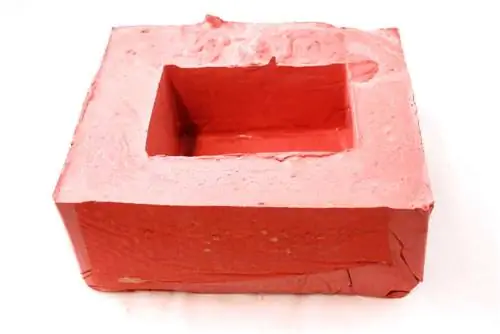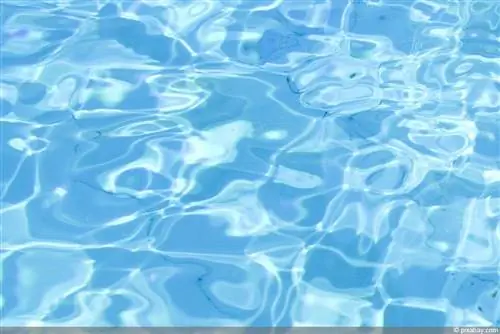- Author admin [email protected].
- Public 2023-12-17 03:39.
- Last modified 2025-01-24 12:45.
If freezing rain and snow cover the car in winter, it needs to be de-iced. It is particularly important for the windows to be freed from ice over a large area. Various methods are explained below to successfully de-ice a car.
Broom and hand brush
A broom or hand brush should always be ready in the car in winter. With this, the first large snow or the top thick layer of ice can be removed from freezing rain before the ice that has formed underneath and is firmly stuck to the panes is removed:
- Always remove large amounts of snow or ice from the entire vehicle
- is required by law
- Roof, hood and trunk lid must be clean
- otherwise it may come off while driving
- may hinder other road users
- in the worst case, lead to accidents
Ice Scraper
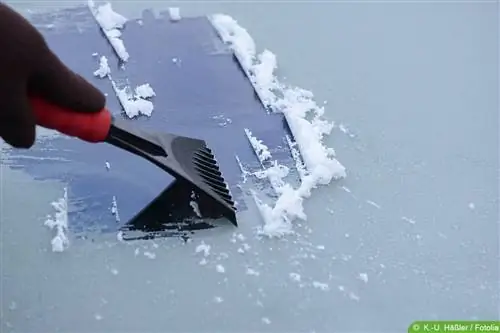
If you need to de-ice the vehicle because the windows are frozen, then the first thing to be mentioned is of course the ice scraper. This small device should not be missing from any vehicle in winter. Because freezing rain usually comes unprepared and there is no preparation for it. However, there are a few things that need to be taken into account here:
- Always wear gloves when scraping ice
- Prolonged scratching can cause frostbite on the hands
- do not use old CD cases
- Danger of scratches on the glass
- parking discs often have a side for scraping ice
- all panes must be completely free of ice
- can be very tiring with an ice scraper
- if possible, it is better to use other methods
The ice scraper, even one purchased specifically for this purpose, should always be used with caution. If there are small particles of dirt on the icy windshield from previous trips, scratches and therefore cracks in the windows can quickly occur. In the worst case scenario, these may even have to be replaced.
Ice protection film
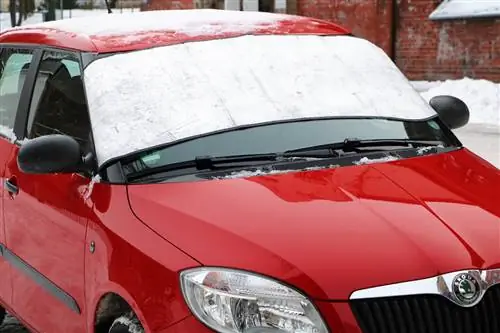
If cold, frost, snow or freezing rain has already been announced, then it is also a good idea to take precautionary measures. To do this, simply place an anti-ice film on the windshield after parking the vehicle:
- can be purchased from specialist retailers or hardware stores
- alternatively, corrugated cardboard of the appropriate size is sufficient
- Window must be dry
- Freezing wetness cannot be completely prevented in this way
- only the windshield is protected from ice
- remaining windows still need to be de-iced
Note:
Do not attempt to deice the windshield or rear window with hot water. Even if the method seems sensible at first glance, the panes can crack. This often happens even if there is already unnoticed, small, older damage on the window, such as a small hole from a stone chip or a very thin crack.
De-icer spray
Of course, the easiest method is to simply purchase de-icer spray from the store and simply spray it onto the windows and other icy areas on the vehicle before setting off. Nevertheless, this is a chemical club that can definitely be avoided. Especially if it is cold for a long time and the car is often iced over, this method is less recommended for environmental reasons and, above all, is quite expensive to purchase over weeks or even months:
- free the windshield with a windshield wiper
- work as quickly as possible
- especially when the freezing rain continues to fall
- otherwise the cold car will quickly ice up again
Vinegar water
Vinegar water is not intended for de-icing, but as a preventive measure to protect the windows from icing up:
- Mix vinegar with water
- one on one
- put in spray bottle
- Spray windows the evening before frost
- This prevents the formation of ice on the windows
- Slices remain free
- It falls all night long, but the method is pointless
However, the vinegar water should not touch the paintwork of the vehicle, otherwise damage to the paintwork could occur, especially if more vinegar than water was filled into the bottle.
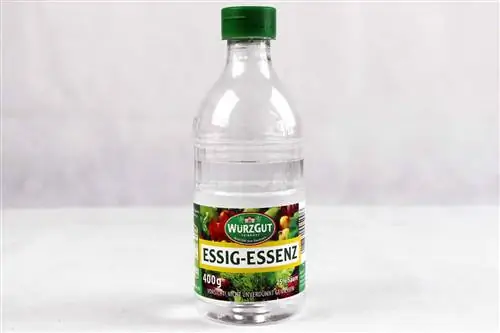
Note:
It is legally stipulated how far you have to de-ice your car. Just a small peephole in the windshield can result in a fine.
Hairdryer or hairdryer
If the vehicle is parked near a power outlet, it is a good idea to use an industrial hair dryer or, alternatively, a smaller hair dryer to remove a thick, stubborn layer of ice from the windows, which often occurs in freezing rain:
- do not use from Aßen
- place behind the windshield inside the car
- place so that the entire pane receives warm air
- After about ten to fifteen minutes the ice can be removed
- To do this, simply remove it from the outside with a broom or hand brush
- scratching is no longer necessary
The side effect of this method is that the interior is warmed up a little. This means that the windows no longer fog up when you drive off later, as is otherwise the case in a cold interior when warm breath hits the windows.
Antifreeze
To make your own effective and not so expensive, but unfortunately also chemical-based, de-icer spray, you can use antifreeze. This is actually intended for the windshield wiper system so that the water doesn't freeze in winter:
- available in specialist shops or hardware stores
- can be purchased cheaper than the finished de-icer spray
- mix with water
- in the ratio of two parts antifreeze to one part water
- fill into spray bottle
- spray icy windows with it
- then simply adjust the windshield wiper
Use the half garage
The so-called half garages, which are placed over the vehicle and secured with rubber ropes, are also available for prevention. These “throws” are not only good methods to prevent icing in winter, but in summer they also protect the paintwork and interior from strong sunlight:
- available from specialist retailers or hardware stores
- cover half the car
- hence also the slices
- the vehicle is ready to drive immediately even in freezing rain
- just take the protection off again
These semi-garages can also be used when parking in outdoor areas, for example on public parking lots or streets, as the license plates of the vehicles remain open and the car can therefore be checked at any time.
Note:
Don't put old newspapers on the windshield the evening before the dreaded freezing rain. Because they freeze and you then have to work even harder to get the panes free and, above all, clean.
S altwater
S alt water, like vinegar water, has a preventative effect. Here too, however, it is important to ensure that the s alt does not come into contact with the paint of the car. If this does happen, the mixture should be washed off immediately. Household s alt also has a similar effect on the vehicle as road s alt in winter and can damage the paint:
- one liter of warm water
- Stir in four to five tablespoons of s alt
- let it dissolve well
- let it cool down
- fill into spray bottle
- spray all windows the evening before the frost night
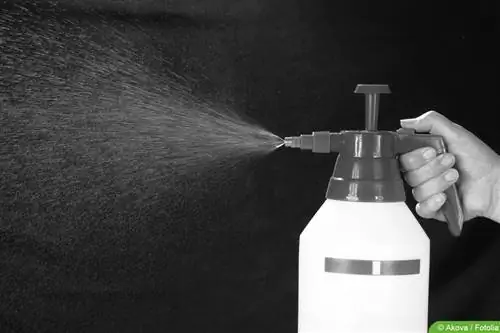
Socks for the exterior mirrors
The exterior mirrors can also easily ice up. If these cannot be heated automatically when the engine is started, which is the case with many new cars, in order to thaw the ice by themselves, these two mirrors usually also have to be de-iced manually. But here too there is a preventative solution:
- put long, soft socks over both mirrors
- prevents freezing on frosty nights
- Socks and mirrors must be dry beforehand
- don't continue to use the wet socks from the day before
Tip:
You don't just have to remove ice and snow from the windows around you. The license plates at the front and back must also be clearly visible at all times and must therefore not be forgotten.
Spirit
Alcohol is alcohol which, when combined with water, can offer a good alternative to the commercially purchased de-icer spray. Because the alcohol simply evaporates in the air after use:
- Use cleaning alcohol or spirit from the drugstore
- mix one to one with water
- put in a spray bottle
- spray on the windows
- Ice is melted in a short time
- just wipe with the windshield wipers
Use the parking heater
A good way to not only clear the entire vehicle of ice and snow before starting a journey, but also to warm it up comfortably is the auxiliary heaters. These are either already installed in the new car models at the factory. Retrofitting to a subsequently installed auxiliary heater is also possible. But there are also auxiliary heaters that can easily be placed in the car and run on battery power or in battery operation:
- turn on some time before the planned trip
- most models come with remote control
- Retrofitting with permanent installation is often not cheap
- but good comfort in cold climates
- there are cheaper mobile models
- are simply put in the car in winter if necessary
- Ice and snow comes off the warm vehicle
- can be easily removed with a broom or hand brush
- Windows no longer fog up immediately when you start driving
When using auxiliary heaters, the time aspect must be taken into account. These are ideally switched on immediately after getting up in the morning before breakfast so that the vehicle is ready for use straight away. If freezing rain falls unexpectedly during the day, it also makes sense to switch on the heating about half an hour before you start your journey.
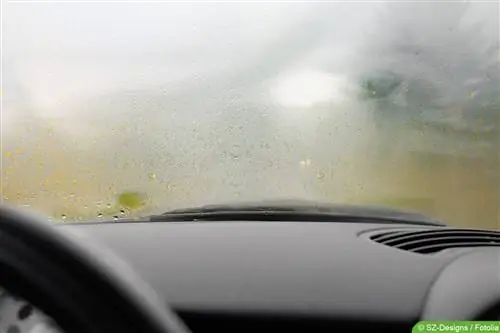
Note:
It's not a good idea if you want to let the vehicle warm up before driving during or after freezing rain. Here, too, a fine can result because this procedure, which used to be very common, is banned for environmental reasons. And this “running while stationary” can also damage the engine.
Hot water bottle
If there is enough time to free an icy vehicle, one or more hot water bottles can also be used. However, the effect of de-icing is rather small:
- Fill hot water bottles with hot water
- put on the dashboard
- Place a blanket or cloth under the bottles to protect from the heat
- the heat rises and frees the windshield from ice
- but mostly only partially in the immediate surrounding area
- However, it is suitable as an additional measure to other methods
- should be done some time before the planned trip




